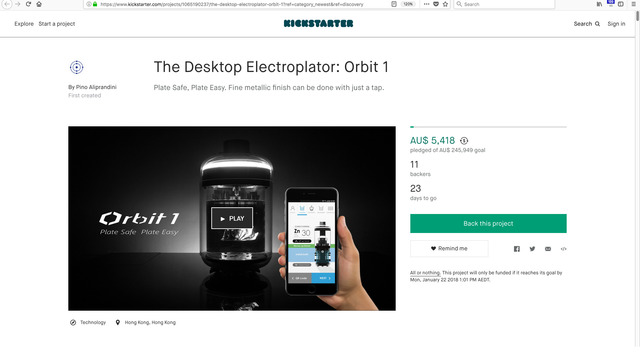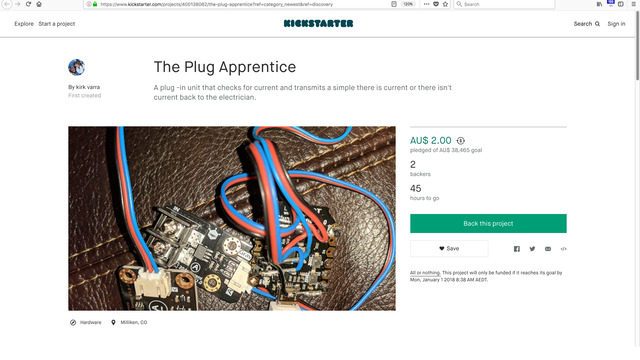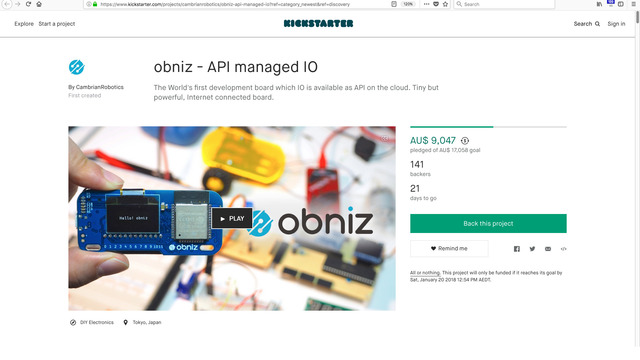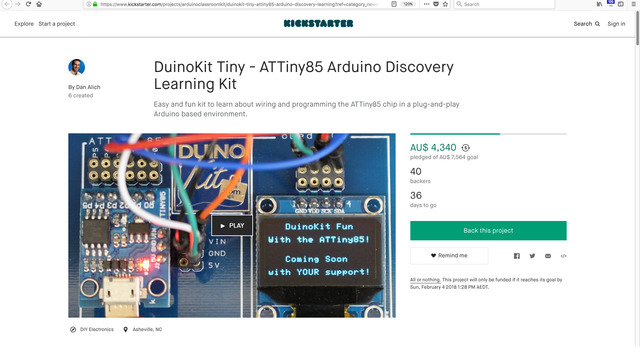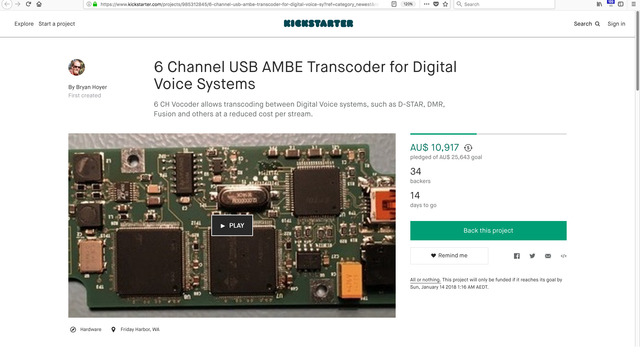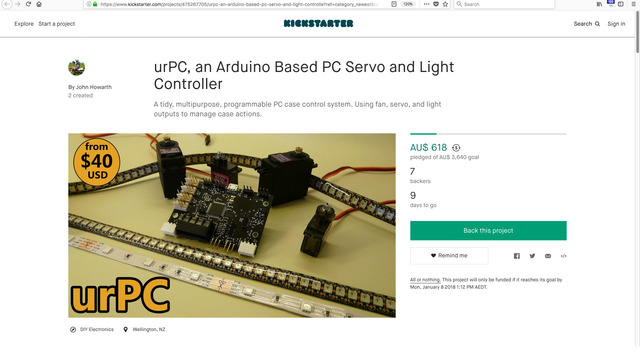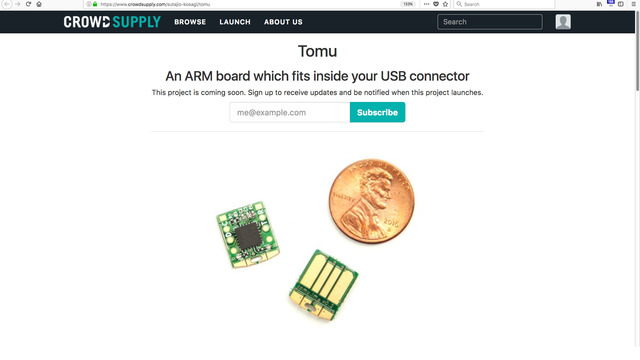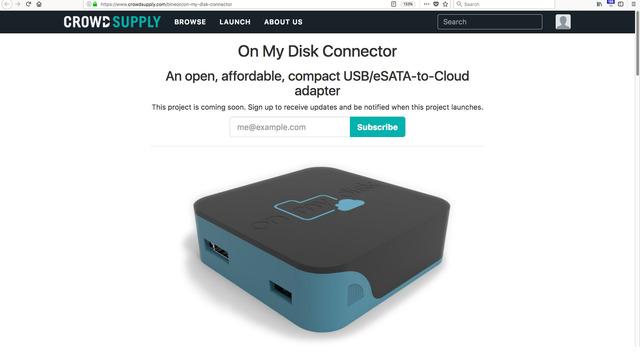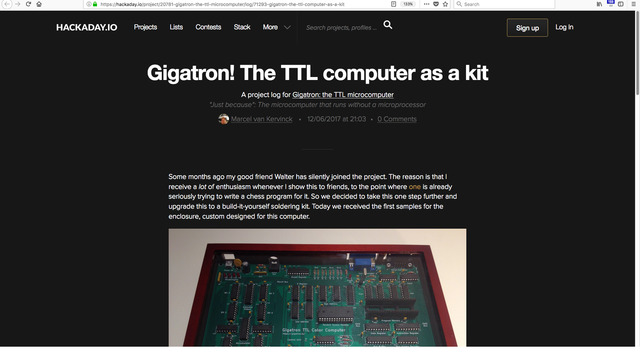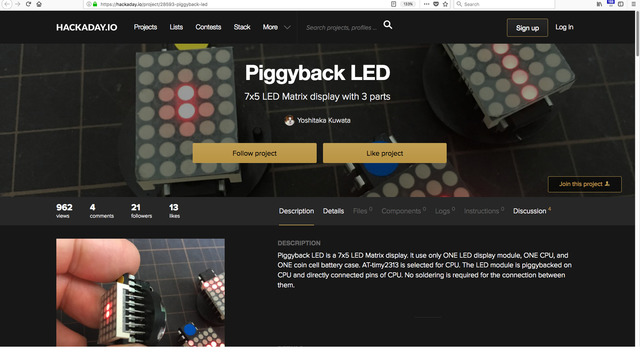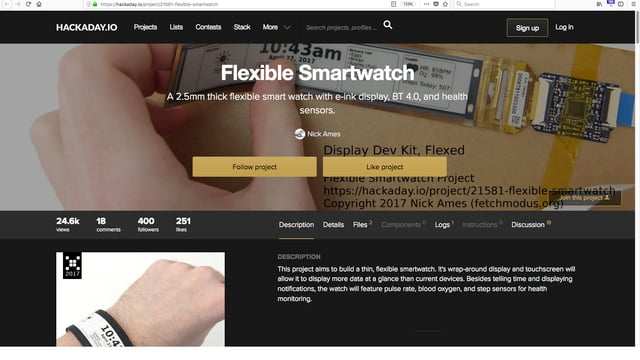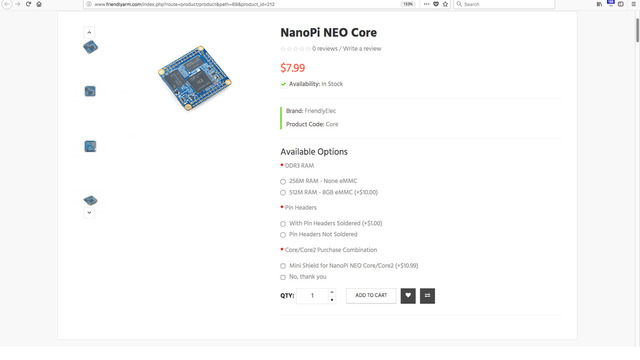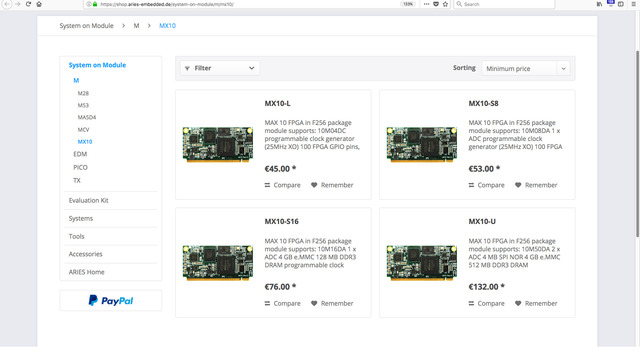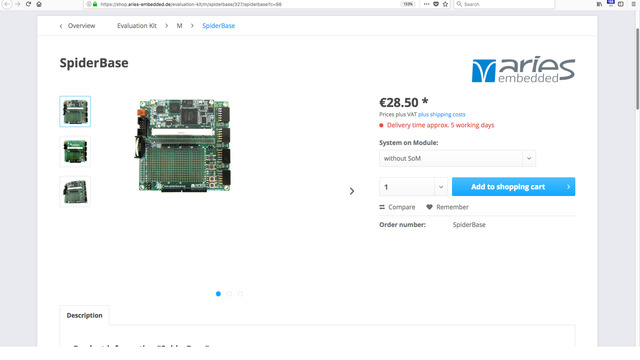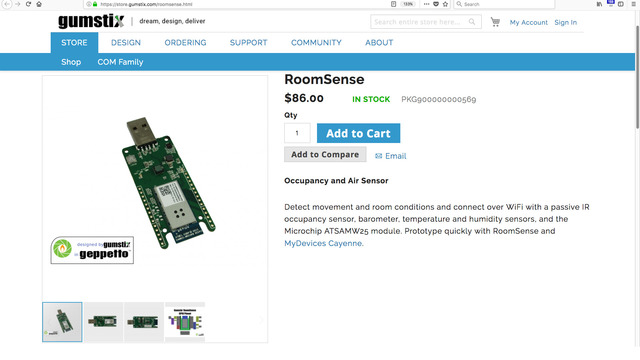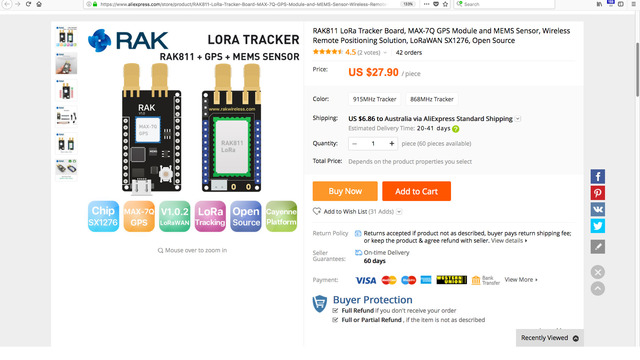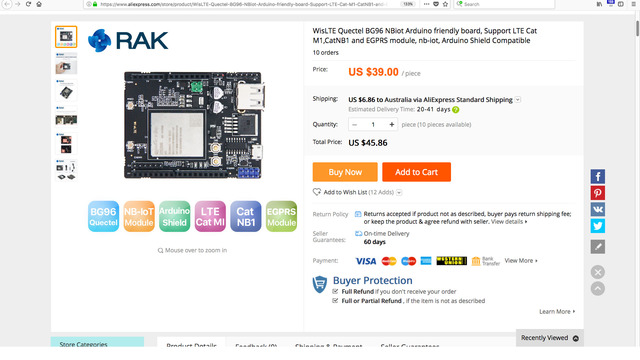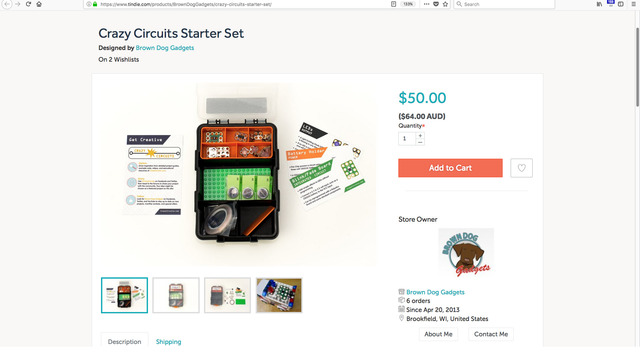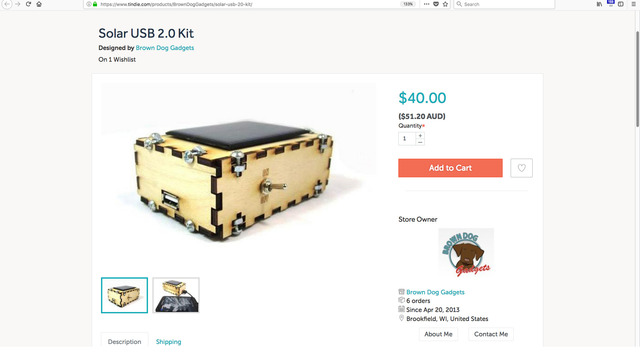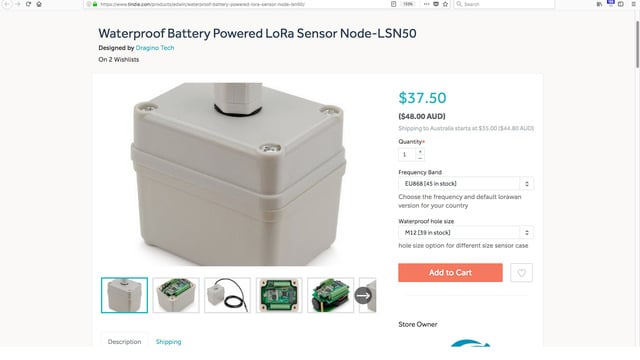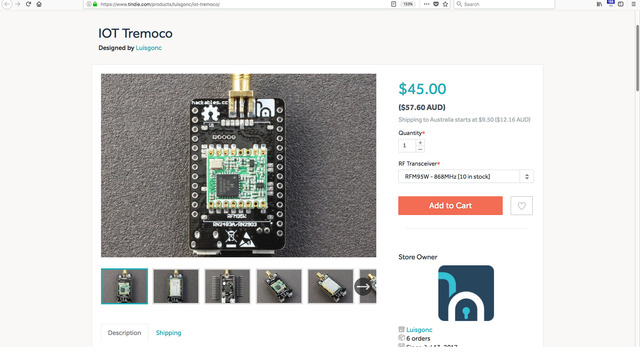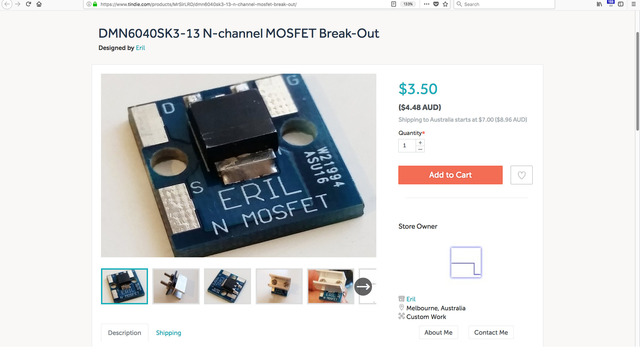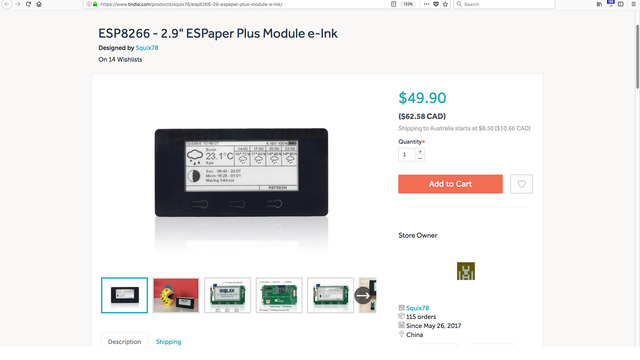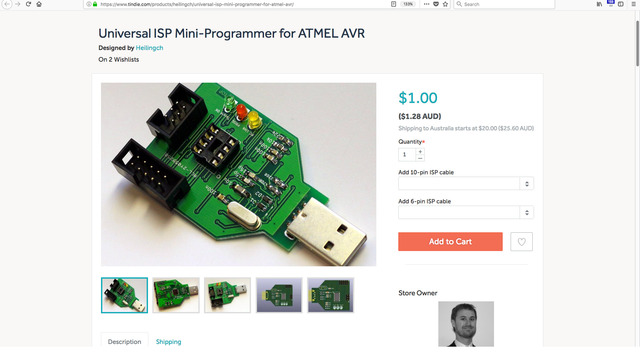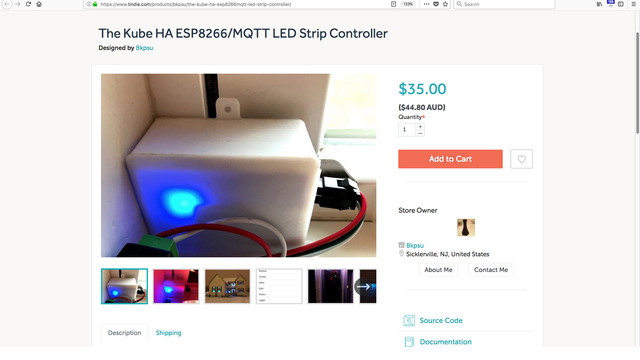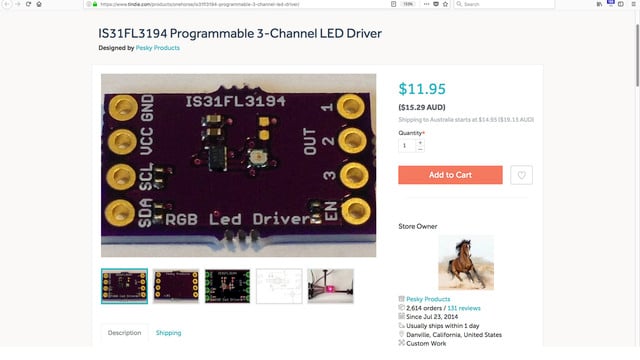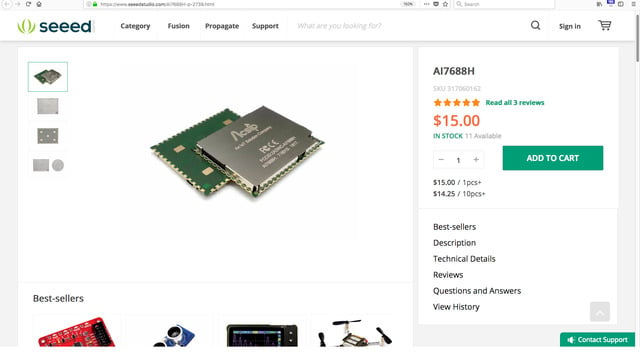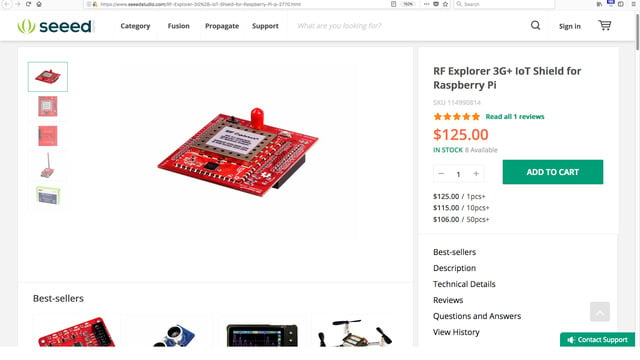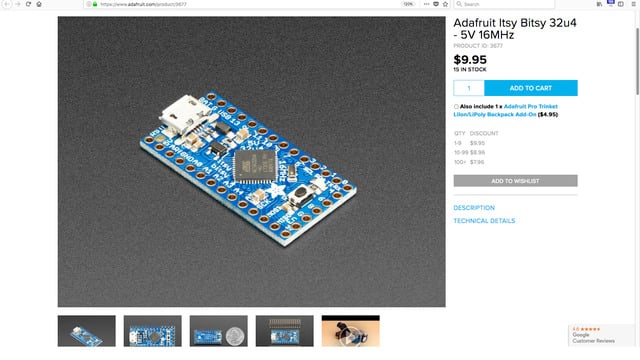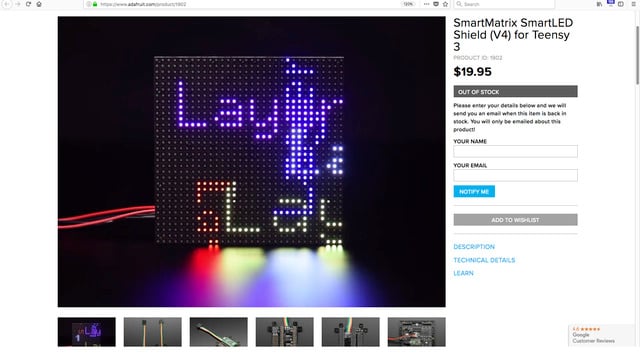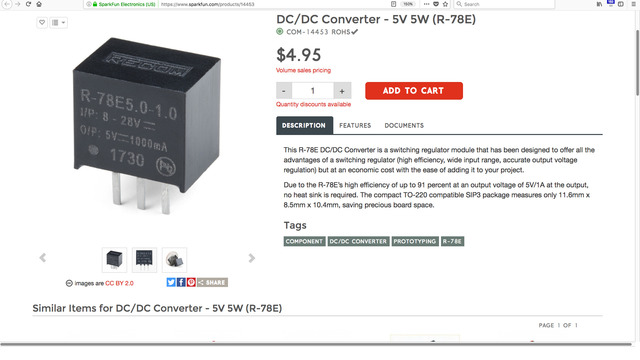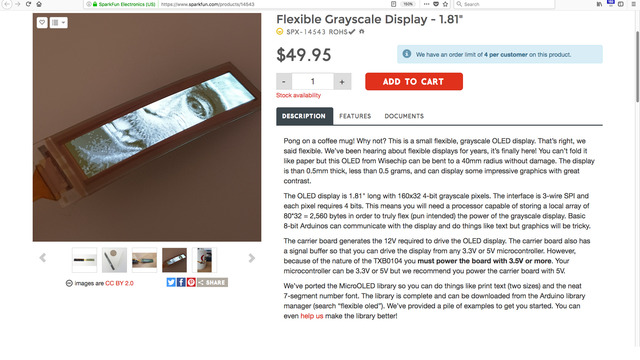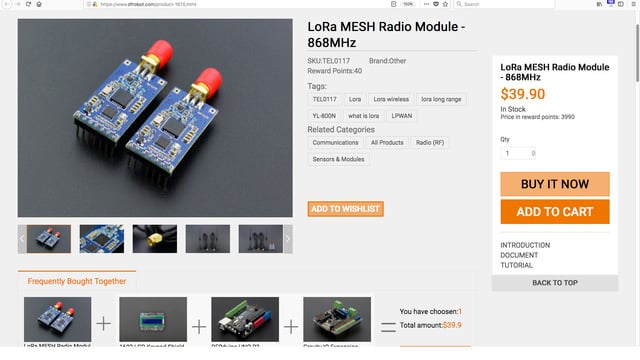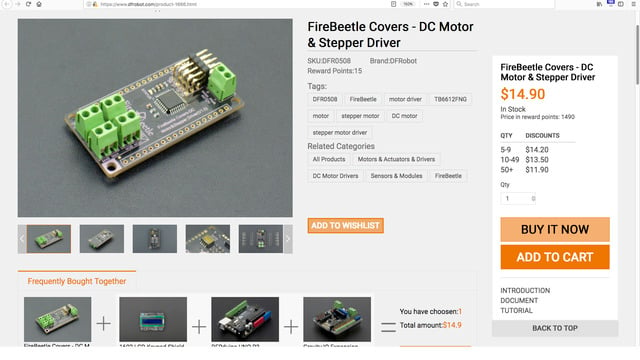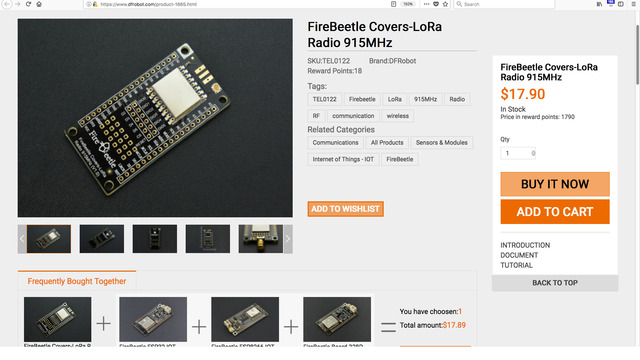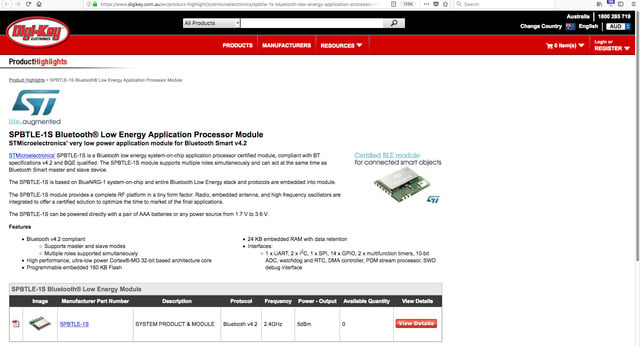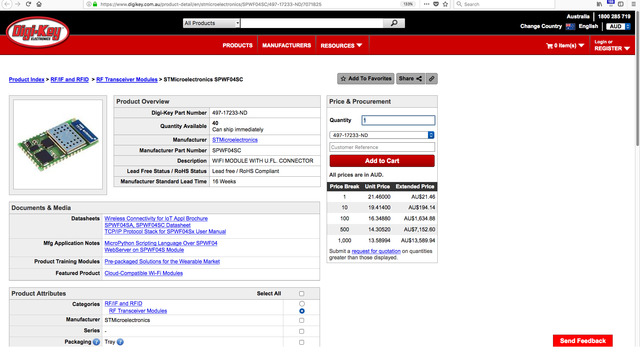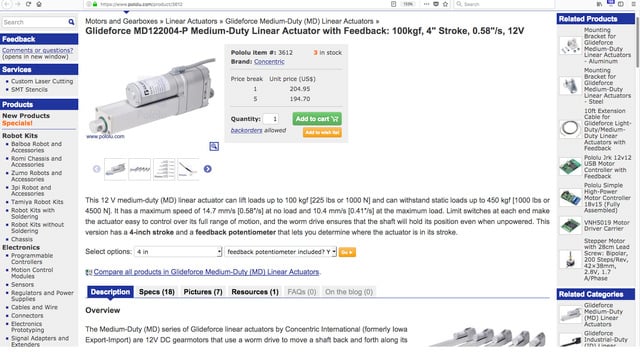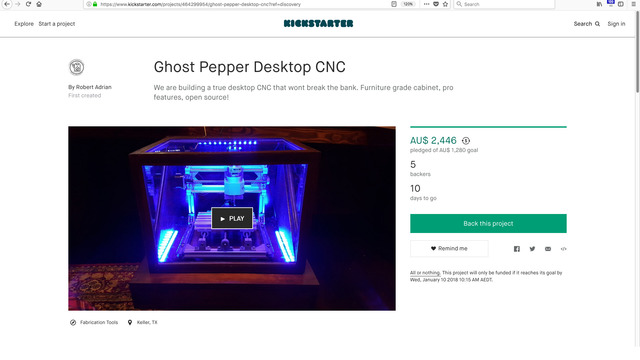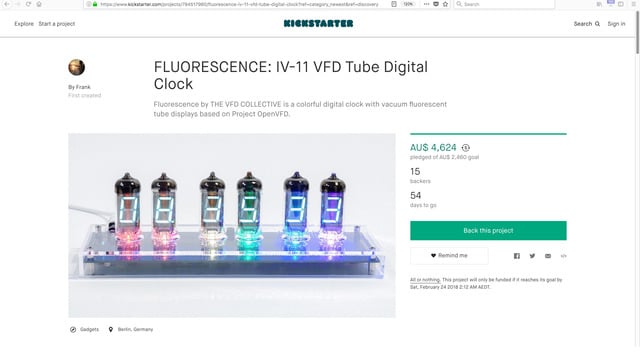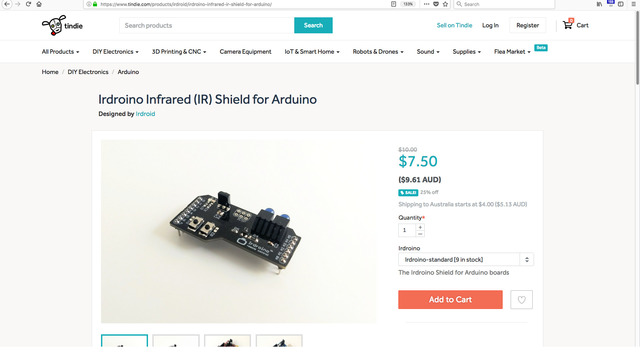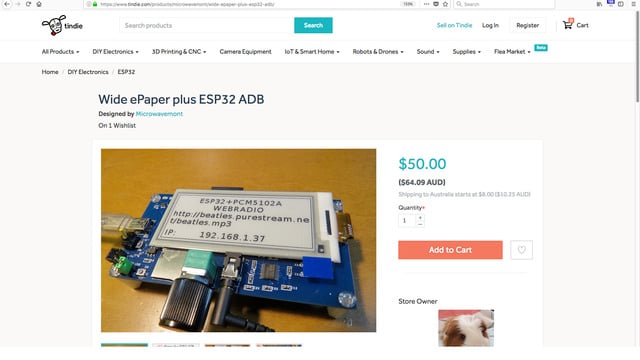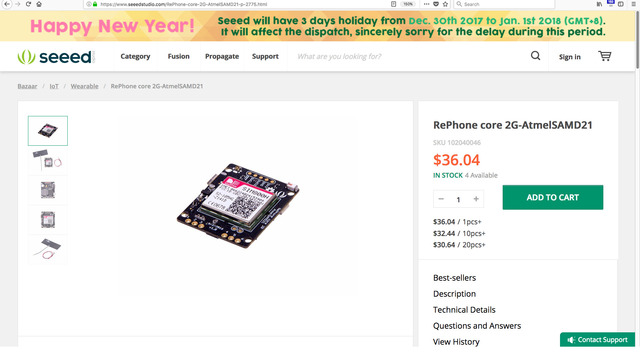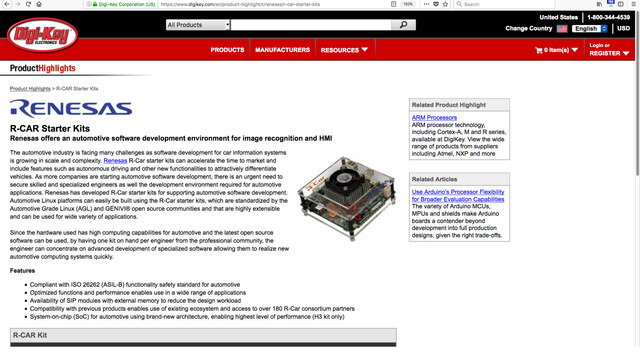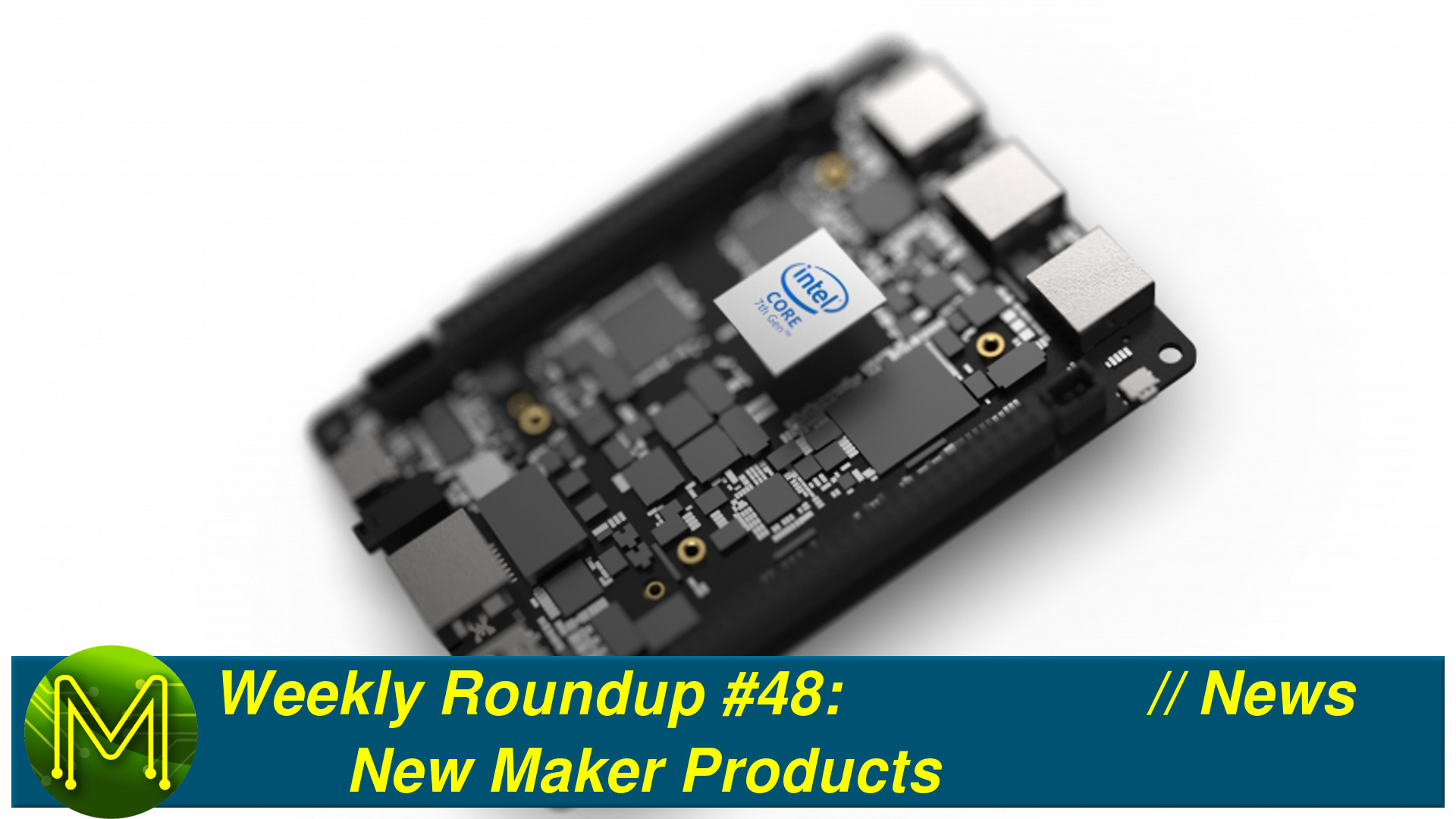Weekly Roundup #49 - New Maker Products // News
The last Weekly Roundup of the year and that means it’s Christmas time. If you live up top, then Christmas is all about snow falling, wood fires and generally trying to get warm.
But I’m from down-under, where Christmas time is all about 50 degree heat waves, BBQs and trying to stay cool.
Crowd Funding
KickStarter
Over at Kickstarter it’s a bit quiet. Everyone must be staying in doors.
Orbit 1
I don’t normally cover desktop fabrication, but this is a new one. They could have used “the world’s first” in the title, as it is the first desktop electroplater. The price is steep and I have no idea on the actual results, but seems to be a fully fledged product that would be useful for 3D printer jocks. They claim it can electroplate a variety of metals with the coating as thick as you want. All controlled by mobile app.The Plug Apprentice
This next one is solving a problem that exists… I think… It lets a sparkie know instantly if a GPO is “live” or not using a mobile app. Personally, I prefer the old fashion method that was hammered in to me when I was young and stupid; which is: 1. Turn off the power yourself. 2. Remove the circuit breaker and lock the power box.obniz
This next one has a great name. The obnoz sounds like you’re trying to say hobnob with a cold, but is actually another IoT board based on the ESP32. It also comes with an OLED and MoSFETs allowing you to drive up to 1A on GPIOs. They offer a cloud based service that allows you to control 12 GPIOs from the ESP via JavaScript and Node.js. Their claim of “world’s first cloud based development board” isn’t true, but it’s a good option if you want to hack around with Internet enabled electronics quickly.DuinoKit Tiny
This next campaign was created by Dan Alich, who’s created a number of successful STEM education kits on Kickstarter, some of which have made it on to other websites. The DuinoKit Tiny is based on an ATTiny85 with USB bridge and on-board 5v regulator allowing it to be powered from 7 to 35v. There’s also a bunch of sensors, buttons and OLED display. If you’re looking for a beginners kit, this one seems to be a goer.NXI Watch
It had to happen… A Nixie Tube watch on Kickstarter. Wonder what the battery life is like… Ohm they claim a month between chargers. OK. Better than most smart watches.6 Channel USB AMBE Transcoder
This is interesting. If you’re in to D-STAR, DMR or Fusion, then this board might be interesting. It’s a 6 channel AMBE vocoder. AMBE stands for Advanced Multi-Band Excitation and a vocoder is a CODEC designed for human voice allowing it to be compressed and transmitted over a digital medium. The price is steep, but if you’re in to this sort of thing and want a multi-channel vocoder, it looks pretty good.StitchKit
StitchKit is another take on AdaFruit’s FLORA and SparkFun’s Lilypad. In fact they contain the same ATmega32U4 MCU as the StitchKit. They claim it can drive 300 RGB LEDs at full blast from a power bank connected via USB Type-C and it seems to be pushing out 9 GPIOs, but it’s not that clear.urPC
The urPC is a campaign from someone who lives over the pond who likes to eat fush and chups. It’s a board designed specifically for PC installs or home theaters allowing you to control a 6A RGB LED strip, 5A NeoPixel strip, 4 servos and 4 PWM outputs for fans. There’s also a temperature sensor and rotary dial and you can talk to it over USB serial.Crowd Supply
While over at Crowd Supply …
Tomu
… the craze of let’s make everything as small as possible is still with us. Over at Crowd Supply in pre-launch, the Tomu is possibly the smallest USB capable Cortex M0 board. So small that it fits inside the USB connector and because of this it only has two LEDs, and two capacitive touch sensors.On My Disk Connector
Then there’s another NAS box in pre-launch. It’s unclear what SoC they are using, but it’s definitely a custom PCB with a dual-core Cortex-A7, 1G RAM, GbE, SD and eSATA. It’s designed to connect and sync files stored locally to a NextCloud based cloud service that’s been up and running for a while now.Honorable mentions
US$4.30 MSP430 dev board
The MSP430 is a pretty cool MCU that’s been around for a while now. They offer features that exist in the SAMD and STM32 lineup but with some fairly impressive low power modes of 1uA in standby and 16nA in shutdown. If you want to check out one of these MCUs cheaply, then head on over to TI’s website where you can pick up a full dev board for only US$4.30.Gigatron as a kit
If you really want to get into retro 8bit MCU design. Then over at HackADay, the GigaTron is now offered as a kit. Which gives you everything you need to build and program your own 8bit MCU using only discrete TTL ICs.Piggyback LED
And here’s a novel idea. Connect the pins of an LED matrix display directly to an ATTiny2313 and power from a coin cell. You can actually build this without soldering. Nice.Flexible Smartwatch
Another interesting HackADay project that’s been around for a while. This one is for a flexible smart watch. Looks really promising, but there hasn’t been any updates since May 2017. That could mean he’s either given up on it or going for a patent.Tiny Low-Tech tracking transmitter
Want to build an ultra-tiny RF tracker? This one is a tiny OOK RF beacon that pings every 2 seconds. With a range of 400m and a 180uA average current draw it has some limited, but useful use-cases.NanoPi Core
The Friendly Guys are back with another SBC to round off the year. They’ve released the NanoPi Core and Core2. The Core runs an AllWinner H3 SoC with 256 or 512MB RAM, 8, 16 or 32GB eMMC, SD and seems that they took my suggestion of providing more GPIOs and have pushed out 54 of them on to 3, 24 pin headers.Whilst the Core2 is the same except it runs the 64bit AllWinner H5 with 512M or 1GB RAM and GbE. Both boards come in at 40mm squared, which is a tiny footprint.
They are also selling the Core Mini Shield, which can fit either of the Core modules breaking out Ethernet and USB onto connectors, but also a USB to SATA bridge based on the JMS567 and M.2 slot for anyone wanting to chuck in an SSD. The Shield is the same footprint as a Pi and looks like it might fit into a standard Pi case.
MX10 FPGA DIMMs
This next one was from LinuxGizmos. It’s a series of DIMM style boards that run an Altera MAX10 FPGA. There are four modules; the base model coming in at 45 euro is pretty much just the MAX10 and nothing else, all the way up to the 132 euro board with 4G eMMC, 512M RAM and RTC. All boards have programmable logic levels from 1.8 to 3.3v and LiPo charging.SpiderBase
These modules are designed to fit into the SpiderBase carrier board with 4 PMOD headers, Arduino compatible headers and prototyping area.GumStix RoomSense
The ATSAMW25 is a WiFi module similar to the popular ESP, but contains a separate SAMD21 and WiFi chip. So, your code doesn’t have to fight with CPU cycles like the ESP32. Gumstix have come out with a USB based board running the SAMW25 as well as humidity, temperature and motion sensors. It’s a bit pricey at US$86, but yet another option for you.RAK Wireless RAK813
Over at CNX software they mentioned several wireless modules from RAK Wireless. The RAK813 is a Bluetooth and LoRa combo module based on the nRF52832 and SX127x ICs. It has a castellated holes breaking out 13 GPIOs, two uFL connectors and runs off a 3.3v supply.RAK Wireless RAK811
Then there’s the RAK811, running an STM32, SX1276 LoRa module and Ublox MAX-7Q GPS module. Designed for long range GPS tracking it also has LiPo charging and pushes out 20 GPIOs.WisLTE Arduino Shield
Then there’s the WisLTE, which is an Arduino form factor board running a Quectel BG96 module which gives you EGPRS mobile connectivity and GNSS or GPS support. It behaves like an Arduino Uno so I expect there to be some decent libraries for this soon.Self-Powered Shower Thermometer
This next one is pretty cool and was a project I had on the back-burner this year. It’s an in-line self-powered device that lets you know of the water temperature for only US$10! Nice. At that price you’d be stumped to make one yourself cheaper. I’ve actually ordered a handful, so expect these to be hacked pretty quickly.Maker Shops
Tindie
Over at Tindie it’s a little more busy.
Crazy Circuits Starter Set
The Crazy Circuits Starter Kit is something that came from a successful Kickstarter in early 2017. It’s a way of building circuits using conductive tape and Lego bricks. This kit gives you same basic bits and pieces to get into circuit building.Solar USB 2.0 Kit
From the same Tindie store, there’s a DIY kit to build your own solar charging box. Comes with 3x 2.6Ah batteries, solar cell and other bits to build a complete charging box.LSN50
If you want a quick, fully encapsulated IoT device, this one gives you a LoRa module and STM32 built into an IP67 rated enclosure. It also has 21 GPIOs and 4Ah battery.Munchkin level counter
If you’re into board games like my family, then you’d know what Munchkin is. This is a simple, but cool Munchkin level counter.IOT Tremoco
The Tremoco is another LoRa and SAMD21 LoRa combo, but this one can use either the RN2483 module, which has an on-board LoRaWAN stack or the cheaper RFM95W LoRa module. Comes with LiPo charging and most of the GPIOs broken out.MOSFET Break-Out
Powering LEDs from an MCU can be a tricky business. This simple breakout board for the DMN6040SK3 makes it a little easier for you. With appropriate heatsink, can switch up to 60V at 20A or at normal 3.3v logic levels can switch 5v at 8A.SQUIX e-Ink module
Back in Weekly Roundup #45 we saw the Squix e-ink display module, well now you can pick one up from Tindie.Universal Atmel ISP
If you want to be able to program a bunch of 8bit Atmel MCUs, then this one will do the job on almost all the ATtiny series and some of the ATmega series. Has 8 pin DIP socket as well as 6 and 10 pin ICSP header. So, it probably has the capability to program more than listed.The Kube HA
Here’s another RGB LED strip light controller, but this one talks MQTT and has a bunch of pre-programmed effects.IS31FL3194 breakout
This breakout has a 3 channel programmable LED driver running off I2C. Not only can you directly control LEDs via PWM, but enable pattern sequences with no CPU overhead.Multi-LED Joule Thief
A Joule thief circuit is pretty cool. It allows you to pull almost all the charge from an otherwise dead battery. This version will light up six LEDs for 100 hours from a single AA battery.AdaFruit, Seeed, SparkFun, DFRobot, DigiKey
And there’s a bit of Christmas action happening at the major store fronts.
Sonoff S31
Over at ITead they have released a smaller version of their Sonoff Smart Socket called the S31. As far as I can see, it’s identical to the S30, but smaller.AI7688H
Over at Seeed Studio they have the AI7688H module. Similar to the other Linkit module it runs Linux on a MIPS24K SoC and has WiFi, 4x 100MB Ethernet ports, PCIe and a bunch of GPIOs wrapped in a small castellated module.RF Explorer 3G
Good to see prices of 3G modules coming down. Still a little pricey, but this one has a 3G module allowing you to do some funky things like: RF sniffing, and spectrum analysis within the 15MHz to 2.7GHz band. This one is designed for the Pi, but you can also get this one for the Arduino.Adafruit Itsy Bitsy
AdaFruit have finally come out with their Itsy Bitsy, which is an ATmega32U4 based board. So, of course, has in-built USB support. They have two versions; a 5v power and logic version… and a 3.3v power and logic version.SmartMatrix SmartLED Shield
If you saw my live Christmas Tree Game video this year I used a 64 by 32 RGB LED matrix, which I bit-bashed the RGB signals to light up the LEDs. I did it the hard way. Or you can always get this board, which handle all the grunt work for you. This board is designed for the Teensy.H3LIS331DL breakout
Over at SparkFun they have a 3DOF IMU based on the H3LIS331DL, which has some pretty decent specs. Able to measure up to 400G at up to 1kHz sample rate and capable of withstanding 10,000G, it’s something that you’d have as the basis of a crash cam recorder. Powered from 3.3v, it can draw as low as 10uA.DC/DC Converter
This is a pretty handy package. Capable of delivering a steady 5v, 1A DC supply from a 6 to 28v input at 91% efficiency. So, almost as good as a buck converter, but in a smaller package.Flexible Grayscale OLED
This looks pretty cool. A flexible gray-scale OLED display. The 160 by 32, 4bit gray-scale display is accessible over SPI and all you need is a 5v supply.LoRa MESH Radio Module
Over at DFRobot they have a LoRa board that handles all the complex protocols when operating within a MESH network, which isn’t LoRaWAN but another protocol entirely. Powered from 3.3 to 5v and communication over UART, it’s a fairly decent all-in-one package.FireBeetle DC/Stepper driver
DFRobot are adding to their FireBeetle add-ons. This one allows control of 4 DC motors or 4 servos or 2 bipolar steppers. Runs off the FireBeetle DC supply with an external motor power supply of 4 to 12v. It can sink a continuous 1.2A per channel, although I’d expect there to be some decent heatsinks on it at that current draw.FireBeetle 915MHz LoRa
There’s also a 915MHz LoRa module cover for the FireBeetle, which would make my LoRa SMS project a whole lot easier. You also have several choices of external antenna.SPBTLE-1S Bluetooth module
Over at DigiKey they have an STMicro Bluetooth module running 4.2 of the Bluetooth stack. Runs a Cortex-M0 with 160KB flash and 24KB RAM, and can be powered from 1.7 to 3.6v.SPWF04 WiFi module
They also have some WiFi modules comparable to the ESP32, but without Bluetooth and running an STM32 Cortex-M4. So potentially has much lower power consumption.Glideforce MD122004
Over at Pololu they have a bunch of linear actuators in. They’re all pretty expensive with the cheapest being a little over US$200, but if you’re in need of moving stuff automatically then these will do the job.Honorable mentions
A few bits and pieces that I didn’t include in my video.


